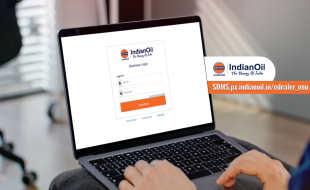Table Of Contents
- Therefore, What is P&L Management?
- The Importance of P&L Management in Daily Life
- Why is P&L Management Significant to You?
- Profit Awareness
- Making Better Choices
- Controlling Costs
- Investor and Lender Confidence
- Internal Accountability
- Understanding the Profit and Loss Statement
- Revenue
- Cost of Goods Sold (COGS)
- Common Errors in Profit and Loss Management (And How to Avoid Them)
Understanding P&L Management: Your Friendly Guide to Mastering Profits and Losses
If you’ve ever attempted to work in business—whether you own a tiny neighborhood coffeehouse, helm a startup team, or freelance for a paycheck—you’ve probably heard the term P&L management.
It reads like a big, scary accounting term only for accountants wearing three-piece suits.
However, the best news is: it’s something anyone in business can—and should—understand.
In this blog, we’re going to break down what P&L management is, why it’s good for your business, and how you can get better at it (even if you hate numbers). Ready? Let’s begin!
Therefore, What is P&L Management?

Let’s start at the start. P&L management, or Profit and Loss management, involves tracking a company’s income and expenditures to determine its profitability.
It’s a critical part of any business operation, whether large or small, or whatever type.
In simple terms, it’s tracking how much you bring in compared to how much you spend. If you bring in more than you spend—hurray, you’re in the black!
Otherwise, it’s time to roll up your sleeves and take a good, hard look at the numbers. The primary tool for managing profit and loss is the profit and loss statement.
It presents all of your income, expenses, and costs over a given period—monthly, quarterly, or annually.
You can consider it your business report card. It allows you to see how your business is performing and where you may need to adjust your approach.
The Importance of P&L Management in Daily Life

Let’s illustrate this with a brief example. If you have a food truck, you make money every day by selling food—that’s your revenue.
However, you also incur expenses for ingredients, gas, employees, permits, and commercials—that’s your overhead.
If you’re earning $1,000 a day and spending $700, then your daily profit is $300. Sustaining this equilibrium is what profit and loss management is all about.
It’s not just paying attention to how much you’re earning—it’s also knowing how well you’re doing your business and making sound decisions based on that.
Effective profit and loss management enables you to identify when expenses are rising.
It enables you to identify which products are most profitable and discover ways to increase your profits without compromising quality.
Why is P&L Management Significant to You?

You might be saying, “I’m not a CFO. Why should I care?” However, the reality is that whether you own a business, lead a team, or work independently, understanding how to handle profit and loss is essential to your success.
That’s why:
Profit Awareness
First comes the profit awareness. The reason is that you’ll know whether your business is profitable.
Businesses may appear busy and profitable at times, but may actually be running at a loss. P&L management simplifies everything.
Making Better Choices
Secondly, you have to make a better choice. Need to hire new staff? Launch a new product? Spend more on marketing?
Working through your profit and loss statement allows you to make good decisions based on facts.
Controlling Costs
Thirdly, it’s easy to overspend if you don’t keep a close eye on your spending. P&L management helps you determine which costs are necessary and which can be cut or renegotiated.
Investor and Lender Confidence
If you ever need to raise capital or borrow funds, having good P&L management in place will put your company in a well-organized and credible position.
Internal Accountability
Having numbers in front of you keeps you and your team more responsible and on target. You’ll know exactly what to do.
Understanding the Profit and Loss Statement

Now, let’s discuss the profit and loss management tool: the profit and loss statement. This statement displays your expenses and income to clarify how much money your business earns over a given period.
These are the primary sections:
Revenue
This is the money you earn from your service or product before subtracting any costs.
It is also referred to as the “top line” since it is the first figure you read on your profit and loss account.
Cost of Goods Sold (COGS)
These are the immediate manufacturing or supply costs associated with your product or service, including raw materials, labor, packaging, and other related expenses.
Total Earnings
Computed by dividing revenue by COGS. This indicates how efficiently your core business is performing before factoring in operating expenses.
Operating Expenses
Typical business expenses include rent, electricity, wages, advertising, software subscriptions, and more.
Net Profit (or Net Loss)
What is left after all the costs are deducted from income? This is the most important section—the bottom line. If it’s positive, you’re making money. If it’s negative, you’re losing money.
Understanding those categories is the key to understanding P&L management. Once you know where your money is going, you can begin to make better decisions.
P&L Management in Action: A Brief Example
Let’s say you run a small online business selling handmade candles. Here’s what a monthly snapshot might look like:
Revenue: $12,000
Cost of Goods Sold: $4,000 (wax, jars, wicks)
Operating Cost: $5,000 (for hosting site, shipping, marketing, and your income)
Your gross profit is $12,000 minus $4,000, resulting in a net profit of $8,000.
Your net profit is $8,000 – $5,000 = $3,000.
This chart shows how profit and loss management is accomplished. You can see what is profitable and where you can trim back or allocate more resources.
How to Improve Your P&L Management Skills
Ready to get smarter on money? These are some easy steps to help you get good at managing profits and losses:
Check Your P&L Periodically
Remind yourself each month to look over your profit and loss statement. It helps you stay up to date with changing trends.
Leverage Technology to Assist You
Accounting software such as QuickBooks, FreshBooks, or Wave can assist you with reporting and give you real-time information, which makes it simpler to manage your profit and loss.
Know Your Margins
Determine the profit margin on every product or service. This will enable you to price strategically and concentrate on high-margin products.
Set Financial Objectives
Set income, spending, and profit targets for every month or every couple of months. Setting a goal will keep you focused.
Check Your Charges
Go through your expenses line by line. Are there any pieces of equipment you’re not using? Services you can cut back on? Every penny counts!
Common Errors in Profit and Loss Management (And How to Avoid Them)

Even the most experienced business operators occasionally make mistakes. Here are a few things to watch out for:
- Just glancing at revenues: High revenues do not necessarily translate to high profits. Costs matter too.
- Neglecting seasonal changes: Focusing on a 12-month period in a seasonal business can be misleading.
- Ignoring small expenses: That $30 monthly fee might not be significant, but 10 of them add up fast.
- Waiting too long: Don’t wait so long to review your statements. You must act early, not react later, with your cash.
Avoiding these mistakes will help you maintain a lean, agile, and profitable business.
Who Should Do P&L Management?
In big organizations, every department or product line might have its own profit and loss accountability.
It is the responsibility of the managers to know and improve their unit. The owner typically does profit and loss reports in small firms.
Yet, even if you are not preparing financial reports, it is beneficial to understand what profit and loss management entails, so that you can make your business thrive and expand.
Wrapping Up: Why Management of P&L Is More Important Than You Realize.
In a nutshell, profit and loss management is a tool that can transform the way you operate your business.
It’s not about crunching numbers—it’s about making informed decisions, being efficient, and developing a sustainable approach to growth.
Whether you’re a startup entrepreneur, a department manager, or a side-hustler, learning to interpret your profit and loss statement and use P&L management techniques will provide you with a better understanding of your financial situation.
And next time someone asks you what P&L management is, you can smile and say, “It’s how I make my business smart, planned, and profitable.”
Read Also:















